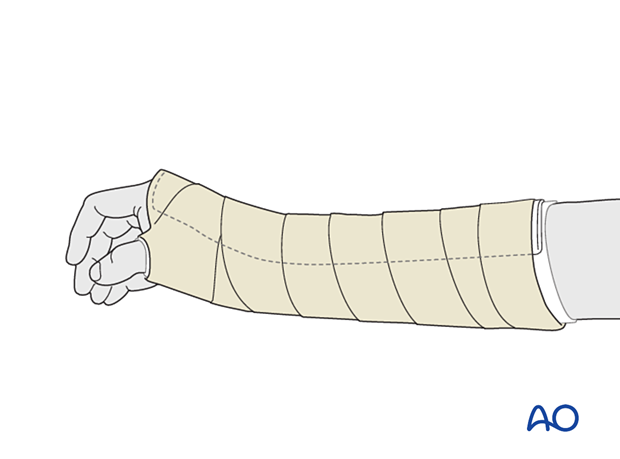Hook excision
1. General considerations
Excision of the hamate hook can be performed in case of late presentation or as a salvage procedure in case of nonunion or arthritis.
A fracture of the pisiform would be treated similarly.
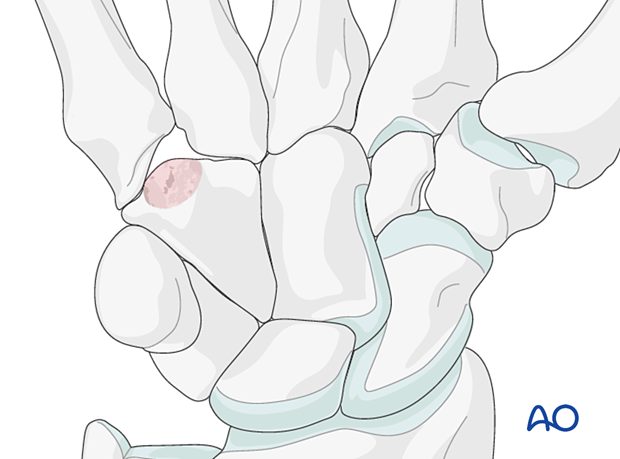
2. Patient preparation
The patient is usually supine with the arm on a radiolucent side table.
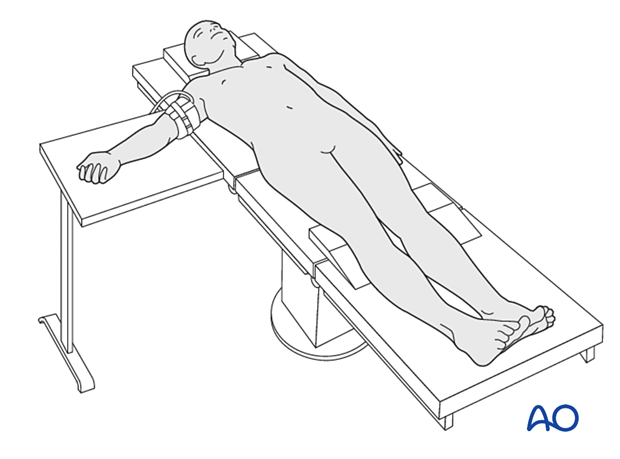
3. Approach
An ulnar approach gives access to the hamate hook.
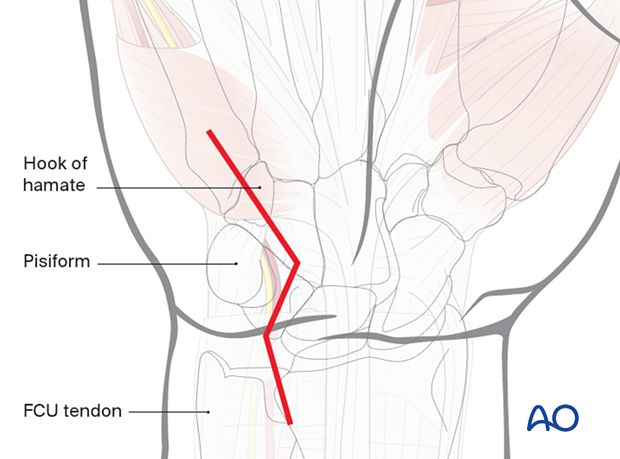
4. Excision
Sharply detach the hook from surrounding soft tissues (pisohamate ligament and fibers of hypothenar muscles).
Be careful to protect the deep branch of the ulnar nerve.
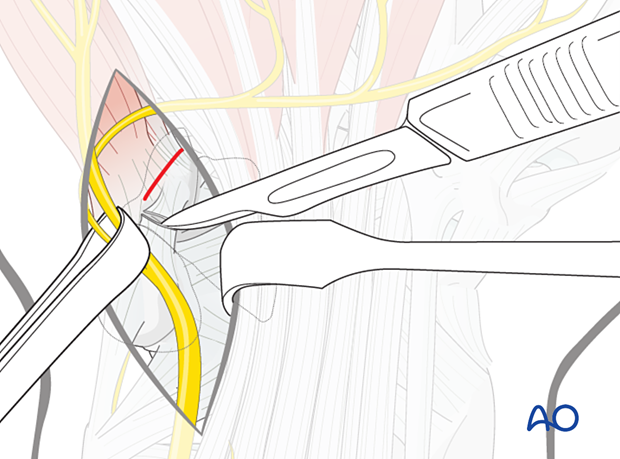
Hook removal
Remove the hook with a rongeur or Kocher forceps, being careful not to place any traction on the deep branch of the ulnar nerve.
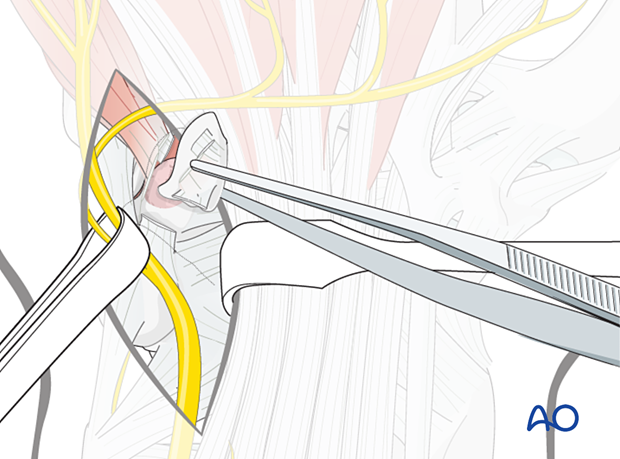
5. Aftercare
The aftercare can be divided into four phases of healing:
- Inflammatory phase (week 1–3)
- Early repair phase (week 4–6)
- Late repair and early tissue remodeling phase (week 7–12)
- Remodeling and reintegration phase (week 13 onwards)
Full details on each phase can be found here.
Pain control
To facilitate rehabilitation, it is important to control the postoperative pain adequately.
- Management of swelling
- Appropriate splintage
- Appropriate oral analgesia
- Careful consideration of peripheral nerve blockade
Immediate postoperative treatment
Rest the wrist with a well-padded below-elbow splint for about 2–4 weeks.
Splinting helps with soft-tissue healing.
